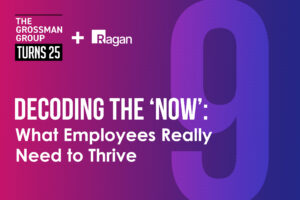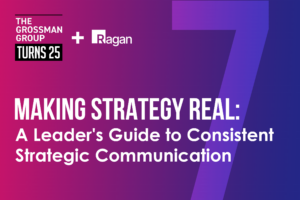Let employees do the talking to attract top talent
Best practices for EGC.

One of the most effective ways for businesses to build and strengthen their reputation as a top employer is to let their own employees do the talking.
Employee-generated content has emerged as a way to attract talent and build a positive employer brand by providing an authentic look at workplace culture. Sometimes companies formalize these efforts, while in other cases, employees create content organically.
“EGC is not about creating a controlled campaign; it’s about making the most of what employees are already doing — creating fun content about their work lives,” said Jill Davis, FINN Partners’ content and marketing director.
Davis, who specializes in employee engagement, stressed that some fear giving employees freedom may lead them to “spill the tea.” But, she said, those individuals would likely do it with or without company consent.
“This is a chance to really celebrate their creativity to the benefit of your brand,” Davis said.
Tapping into social trends
Companies can use EGC in newsletters or office video boards to build a stronger sense of community internally. FINN Partners has let employees in Singapore takeover its Insta, for instance, to show other employees what it’s like to work around the globe.
But externally, it’s most effective at providing job seekers with “authentic proof points” about work culture beyond what businesses promote on career pages.
“It’s about creating a less rigid, more relatable employer brand,” Davis said.
Social media is a natural home for EGC, with employees tapping into trends like hauls, office tours, “pass the phone” and “get ready with me” videos, such as a recent piece with a Lululemon employee who combines the piece with a “pros and cons” list of working there.
“The reality is that today TikTok is 100% a go-to channel for young job seekers,” Davis said.
“One thing we absolutely know is that employees are demanding more growth and professional opportunities,” she continued. The strongest pieces of EGC tend to be the ones where people share their professional journeys from one position to the next.
“It’s showing how their career has evolved and changed over time, and that gives internal employees a sense that there is more possibility there,” Davis added.
A recent example is a nearly 5-minute video posted by a creator who generated content about being a Latina in STEM and fashion for Nike. In the piece, she discusses her career path, how she got into social media for a living and even ways to apply for a job with Nike.
Davis noted that EGC can be particularly important in the current return-to-office era. Some companies, such as Google, have found success by letting staff give behind-the-scenes tours of their New York office and other employees provide a glimpse of what it’s like to live and work in Los Angeles.
“Official messages, the official packages and benefits are really important,” Davis said, “but many employees today want to know, ‘Am I going to be happy there?’”
EGC best practices
EGC won’t help companies with a struggling work culture, Davis said. It’s a tool to highlight what’s already working and differentiate an employer from competitors.
Davis acknowledged that some companies struggle with giving employees creative freedom without dictating content. But for EGC to be effective, employees’ authentic voices must come through.
Supporting EGC doesn’t mean employees can post anything without consequences. Social media policies are essential, Davis said, and EGC shouldn’t override them.
While most EGC is positive, issues can arise such as an employee saying something negative about the company. A plan for handling viral missteps content ensures companies stay ahead of potential problems.
Companies can create structured campaigns, like a companywide hashtag for a video contest for staff. Or they can choose employees who already create engaging content.
Even a small, dedicated group can have a big impact with minimal effort, Davis said. Finding them can be as simple as sending a group message asking for volunteers. Davis suggested using managers to identify enthusiastic employees who best personify company culture.
Companies using EGC should track engagement and reach on social posts. They should also emphasize a “How did you hear about us?” section on job applications to measure success.
“Many employees want to create and contribute creatively to their workplace story,” Davis said. “This is a way that they can contribute to the company’s culture and express themselves more fully.”
Navigating the legal landscape
Employment attorney Erin Krinsky of Krinsky Legal said there are a number of legal considerations when formally implementing EGC for use in business-related ads or internal promotions.
“If you’re going to engage with this kind of content and have employees create it, you really have to consider when they’re creating it,” Krinsky said. “Is it (off) the clock? And then are these employees classified and being paid correctly?”
In formalized relationships, even if content creation happens outside work hours, Krinsky warned that companies must track time and compensation.
“If the company is using EGC in its advertising or marketing, the court is probably going to find that the time an employee spent creating it is compensable time,” she said.
Krinsky recommended formalizing agreements, ensuring employees understand their rights and clarifying content ownership.
Davis stressed that rules and regulations are important to any formal EGC program. Also important is to specify the role the employee has with the relationship and how it reflects the business. In the Nike example above, for instance, the content creator starts her video by clearly saying the content and opinions expressed were her own and not necessarily those of the company.
But in the end, EGC isn’t just about contracts and legal deals. It’s important to remember why you created it: to celebrate your company’s culture.
“Remember: It’s supposed to be fun,” Davis said.
Casey Weldon is a reporter for PR Daily. Follow him on LinkedIn.








I enjoyed this article’s focus on bringing attention to the positives of a workplace and company culture. Consumers love authenticity, and highlighting the true atmosphere of a workplace not only makes it attractive internally for employees but also externally for viewers. It also makes the content more lighthearted. This article inspired me to brainstorm how I could bring authenticity through employee-generated content to my workplace! -Olivia Pickens, Platform Magazine editor/writer